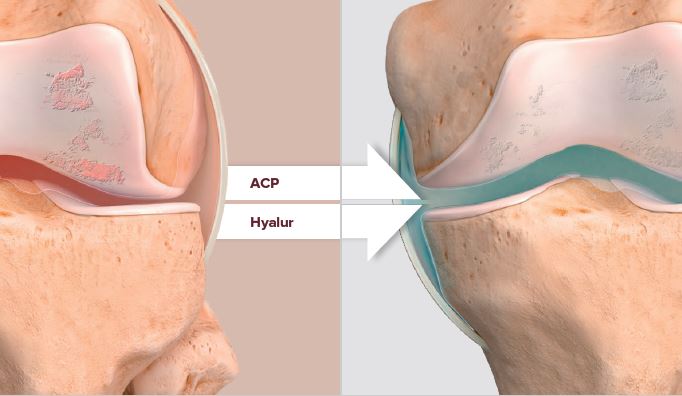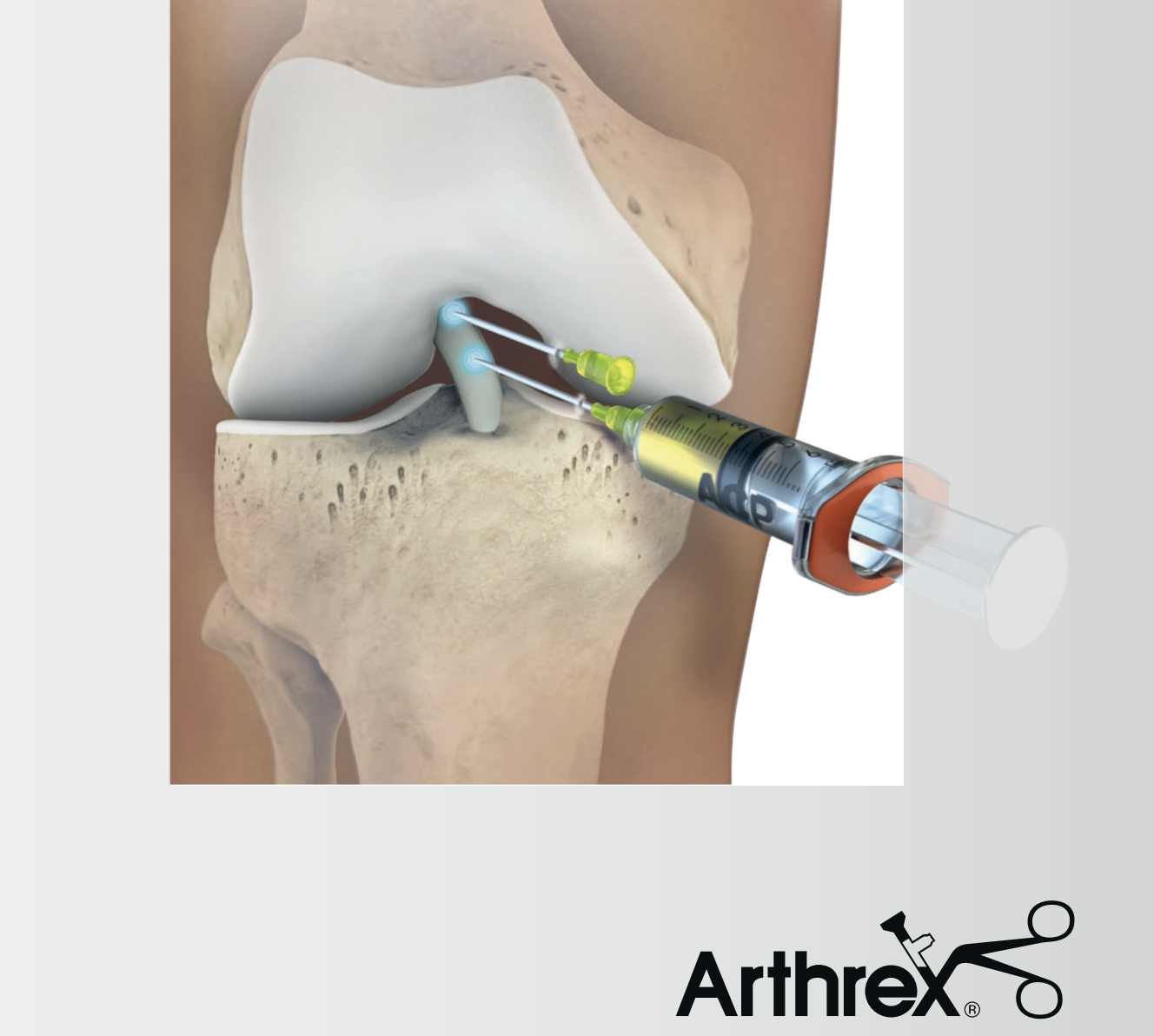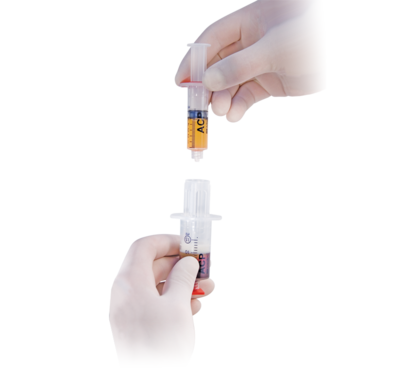Orthopaedic PRP-PRF Injections

Do you experience joint stiffness in the mornings or discomfort when you start walking? These symptoms may be caused by osteoarthritis, a common wear and tear of the joint cartilage. Fortunately, there’s an innovative treatment that uses your body’s own healing abilities to alleviate joint pain: Platelet-Rich Plasma (PRP) injections.
This cutting-edge therapy involves injecting concentrated platelets from your own blood into the affected area. This promotes natural healing, potentially reducing pain and improving joint function. Embrace a new approach to managing your joint discomfort with PRP-PRF injections, and start your journey to pain-free movement today.
PRP Injection for Joint Pain
PRP therapy is a natural, biological treatment that uses your body’s own healing factors. It’s an effective option for those suffering from osteoarthritis of the knee, a condition caused by the progressive deterioration of joint cartilage and menisci due to trauma and wear and tear. As the cartilage deteriorates, bone surfaces become exposed, leading to pain, rigidity, swelling, and walking difficulties. By harnessing the power of platelets from your own blood, PRP therapy aims to reduce pain and improve joint function, offering a promising solution for arthritis patients seeking relief.
What Conditions Are Treated With PRP?
PRP injections are a versatile treatment for various joint and muscle conditions in the hip, knee, arm, shoulder, lower leg, and feet. Here are some of the disorders that PRP can treat:
- Acute muscle tears and strains
- Chronic tendinopathies, such as tennis elbow, Achilles tendonitis, patellar tendonitis, and rotator cuff issues
- Ligament injuries, including medial or lateral collateral ligament (MCL/LCL) sprains
- Osteoarthritis

Indications for PRP Therapy
- Chronic joint pain secondary to osteoarthritis
- Poor response to conservative management
- Patients unfit for joint replacement
- Patients wishing to delay or avoid surgery
- Tendinopathy
- Muscle tears and injuries
- Tendon tears and ruptures
Why Use PRP Injections?
PRP injections offer a less invasive alternative to surgery for those seeking relief from joint pain. They are ideal for patients who prefer to avoid surgery or are not candidates for surgical procedures. PRP therapy allows for a quicker recovery period and is significantly less painful than surgery.
Aims of PRP Injections
PRP injections aim to repair cartilage, alleviate joint pain, and improve osteoarthritic symptoms, potentially delaying the need for joint replacement and enhancing function and healing. Platelets produce growth factors that stimulate chondrocytes (joint lining cells), leading to cartilage repair. PRP is an autologous concentration of a large number of platelets in a small plasma volume, containing substantial amounts of cytokines and growth factors (GFs) that stimulate cell growth, vascularization, tissue regeneration, and collagen synthesis.
The delivery of high concentrations of cytokines and GFs by PRP to damaged tissues is believed to benefit tendon and cartilage regeneration.
Is PRP Painful?
Most patients tolerate PRP injections well, although some soreness can occur due to the PRP-induced inflammatory response. Expect some swelling and discomfort during the first 48 hours post-injection. Pain medication is provided to help manage any discomfort during the recovery period.
How Quickly Does PRP Start to Work?
Most patients begin to see improvement within 6-12 weeks. Pain typically decreases over time, with clinical trials reporting continued improvement for up to 6-9 months post-injection.
Post-Treatment Care
Follow-up appointments are scheduled every six months to ensure ongoing support and care. If you respond well to the initial injection, PRP treatments can be repeated every six to eight months for maintenance.
Do Platelet-Rich Plasma Injections Delay the Need for Knee Replacement?
PRP injections have shown promise in delaying the need for knee replacement. A study revealed that 85.7% of patients did not require total knee replacement during a five-year follow-up. Research into PRP therapy indicates potential for cartilage repair. MRI evidence suggests that PRP can regrow cartilage in knee patients, though some studies report no significant cartilage growth. PRP therapy has been explored as a treatment option for Stage IV osteoarthritis, with varying degrees of success.
When PRP Works – Patient Outcome Research
Evidence supports PRP therapy as an effective treatment for knee osteoarthritis. Earlier research indicates that PRP injections result in improved knee pain and function in osteoarthritis patients. Overall, 60% of patients with stage 2 to stage 4 osteoarthritis reported good outcomes and less knee pain after PRP treatments. Another study suggests a 70% improvement in knee pain for Grade 1 to Grade 3 patients. Long-term, meaningful results were seen in 85% of patients experiencing knee pain after PRP treatments.
PRP Injection for Sports Medicine
PRP is widely known for its restorative properties and is used in sports medicine to promote the regeneration of bone, skin, muscle tendons, and tissues. It has applications in many degenerative disorders, piquing the interest of clinicians, particularly in physical medicine and sports injuries. The production of PRP is relatively easy, making it a trusted natural biological therapy among sports physicians and players worldwide.
PRP is known to heal injuries and conditions such as rotator cuff tears, shoulder impingement, elbow epicondylitis, ACL reconstruction, patellar and quadriceps tendinopathy, Achilles tendinopathy, and acute Achilles rupture. PRP therapy injections are used as a primary treatment and as a surgical augmentation to enhance healing following ligament reconstruction and repairs. PRP also serves as an orthobiologic therapy modality in foot and ankle surgery, bridging the gap between conservative treatment and invasive surgical procedures.

Arthrex® – treatment of diseases and injuries with platelet rich plasma
Platelet rich plasma therapy will help in treatment of e.g:
- knee ligament damage
- damage to the rotator cuff, so-called rotator cuff syndrome
- jumper’s knee / runner’s knee
- fracture(s) or abnormal bone healing
- inflammation or degeneration of the Achilles tendon
- tennis elbow
- chronic joint pain
- overload injuries
- heel spurs
- tendon and muscle damage
- injuries or disorders of ligaments
- slow-healing wounds, ulcerations
- post-traumatic loss of joint cartilage
- other diseases of the knee, hip or shoulder joints
Arthrex – treatment of degenerative joint disease
The Arthrex® ACP platelet rich plasma therapy is recommended for advanced, moderately severe and mild cases of degenerative joint disease/arthrosis grades 1-3.
It also brings very good results in cases of tendon inflammations.
The “pulling” and stiffness sensation that usually accompanies degenerative joint disease, as well as start-up pain, especially in the morning, disappear. The joint cartilage is renewed, elasticity is restored and range of motion is increased.
Why should I choose Arthrex PRP ACP treatment?
Arthrex® ACP (Conditioned Autologous Plasma) is currently the most advanced method of collection and preparation of platelet rich plasma used for treatment. It is perfectly tolerated by the body and completely safe – the body undergoes a self-healing process based on its own platelets.
Arthrex® uses an innovative system of two integrated syringes in a closed system to collect and separate the plasma. A dual syringe facilitates collection and separation of extremely efficient plasma with the highest purity parameters, platelet concentration – up to 250% higher than other products available on the market. And all this without the use of chemical activators or anticoagulants.
- The highest concentration of growth factors: from 2.5-3 times higher than in case of other methods.
- Growth factors are released in the patient’s body, not in a syringe.
- A painless procedure – the only product on the market without chemical activators and anticoagulants.
- Safe treatment (autologous therapy) – no side effects, allergic reactions and allergies.
- Medical system from the renowned company, Arthrex®.
What does the Arthrex® procedure look like?
- Collection of blood from a patient vein – approx. 15 ml.
- Transfer of the material in a closed system to an internal syringe for centrifugation.
- Separation of the material into a concentrated preparation.
- Local anaesthesia of the skin with cream at the site of injection.
Injection of the preparation into the damaged area.
